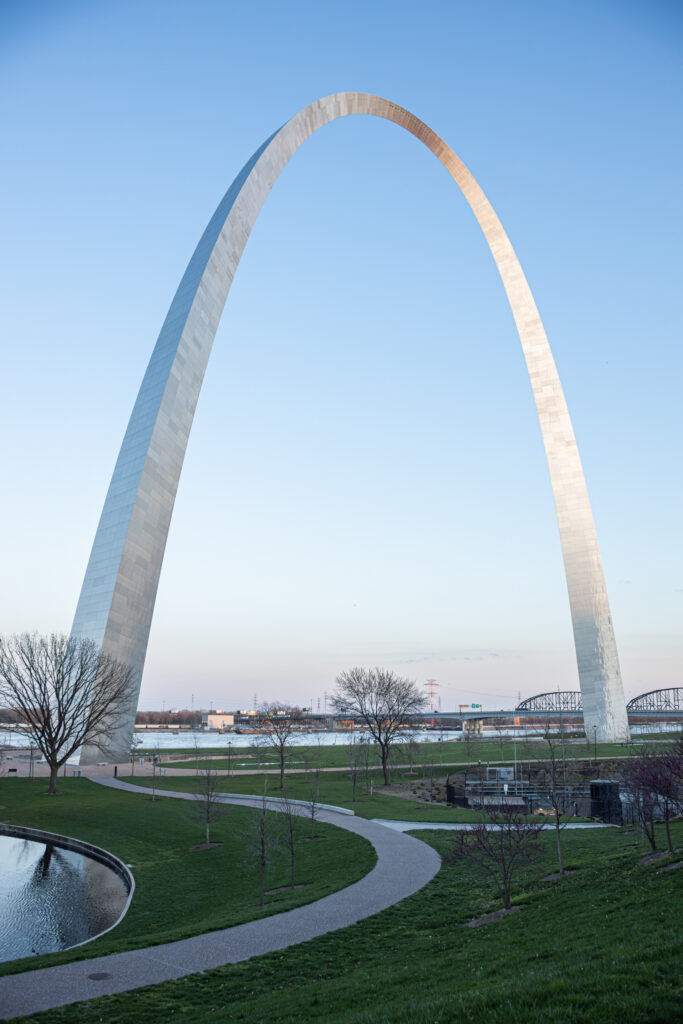Hyperfocal distance may sound like something exotic and hard to understand but it’s not. Hyperfocal distance is simply the nearest distance you can focus at where everything beyond that distance appears to be in focus all the way to infinity.
Ok, so that’s good to know, but why is it important? The reason is that when taking landscapes we often want to get as much of the scene into sharp focus as possible. Meaning, we want objects in the foreground to be as sharp as objects far away at the horizon. You then might ask, why not just focus on something really far away, won’t that work the same? Actually, it probably won’t, although it could depend on where the AF tends to focus or where you tend to focus if you manual focus. But let’s assume that the AF focuses perfectly on the horizon, isn’t that good? Well, one of the odd things about lenses is that they have much more depth of field behind the focal (towards infinity) plane than in front of it (towards the photographer), and the ratio increases as the aperture gets smaller. Because of this effect it’s not always necessary or desirable to focus directly on the horizon to get the horizon in focus.
And if you think about it focusing on infinity is not the best place to focus anyway. Forgetting the fact that it’s difficult to focus directly on objects at the horizon, objects on the horizon tend to be a little fuzzy anyway. 99% of the time, the details and subject matter that are most visible are much closer to you. So, it only makes sense to focus as close as possible at the hyperfocal distance where the most visible detail in your image is and let the depth of field of the lens reach out to the horizon thus maximizing your lens’s resolution potential.
Now that you know what it is, you obviously want to use a hyperfocal distance for your lens, because it makes your images appear sharper and better focused. But how can you determine this distance for your lens? A simple math equation allows you to derive the hyperfocal distance: H = (f2 / T (.025)) + f
Where “H” is the hyperfocal distance in mm, “f” is the focal length, and “T” is the selected aperture.
So, if we have a 35mm lens, at f/4, what is the hyperfocal distance?
The answer is 12,285 millimeters or 12.29 meters which is 40.31 feet. In this case if you were to focus at 40.31 feet, everything from 40.31 feet to infinity will be in focus. And as a bonus, you’ll actually have half the distance in front of the hyperfocal distance in focus as well. In this case half the hyperfocal distance is 20.16 feet. Finally, we have determined that we can get from 20.16 feet all the way to infinity acceptably in focus with our 35mm lens set to f/4.
As you probably derived from the equation there are two properties of a lens that determine the hyperfocal distance, the aperture, and the focal length. Decreasing the focal length will lower the hyperfocal distance and narrowing the aperture will also lower the hyperfocal distance. You may be wondering about the mystery value of “.025”. This is the circle of confusion in millimeters.
Below are 2 charts showing the hyperfocal distance for apertures f/2.8 – f/16 of various focal lengths.
Here is the chart in millimeters.
| Focal length | f/2.8 | f/4.0 | f/5.6 | f/8.0 | f/11 | f/16 |
| 11mm | 1,739.6 | 1,221 | 875.3 | 616 | 451 | 313.5 |
| 15mm | 3,229.3 | 2,265 | 1,622.1 | 1,140 | 833.2 | 577.5 |
| 20mm | 5,734.3 | 4,020 | 2,877.1 | 2,020 | 1,474.5 | 1,020 |
| 24mm | 8,252.6 | 5,784 | 4,138.3 | 2,904 | 2,118.5 | 1,464 |
| 28mm | 11,228 | 7,868 | 5,628 | 3,948 | 2,878.9 | 1,988 |
| 35mm | 17,535 | 12,285 | 8,785 | 6,160 | 4,489.5 | 3,097.5 |
| 50mm | 35,764.3 | 25,050 | 17,907.1 | 12,550 | 9,140.9 | 6,300 |
| 85mm | 103,299.3 | 72,335 | 51,692.1 | 36,210 | 26,357.7 | 18,147.5 |
| 135mm | 260,492.1 | 182,385 | 130,313.6 | 91,260 | 66,407.7 | 45,697.5 |
| 300mm | 1,286,014.3 | 900,300 | 643,157.1 | 450,300 | 327,572.7 | 225,300 |
And here is the same chart in feet.
| Focal length | f/2.8 | f/4.0 | f/5.6 | f/8.0 | f/11 | f/16 |
| 11mm | 5.7 | 4 | 2.87 | 2.02 | 1.48 | 1.03 |
| 15mm | 10.59 | 7.43 | 5.32 | 3.74 | 2.73 | 1.89 |
| 20mm | 18.81 | 13.19 | 9.44 | 6.63 | 4.84 | 3.35 |
| 24mm | 27.08 | 18.98 | 13.58 | 9.53 | 6.95 | 4.8 |
| 28mm | 38.84 | 25.81 | 18.46 | 12.95 | 9.45 | 6.52 |
| 35mm | 57.53 | 40.31 | 28.82 | 20.21 | 14.73 | 10.16 |
| 50mm | 117.34 | 82.19 | 58.75 | 41.17 | 29.99 | 20.67 |
| 85mm | 338.91 | 237.32 | 169.6 | 118.8 | 86.48 | 59.54 |
| 135mm | 854.63 | 598.38 | 427.54 | 299.41 | 217.87 | 149.93 |
| 300mm | 4,219.21 | 2,953.74 | 2,110.1 | 1,477.36 | 1,074.71 | 739.17 |
I included 300mm mostly for entertainment purposes. It’s clear from this chart that using a hyperfocal distance with a 300mm lens is a pointless act. From 11-35mm hyperfocal distances are definitely useful.
Below is an example of an image where I used my hyperfocal chart to determine the best point of focus for my scene. If you look closely in the grass there is a black circle, that is my lens cap, and my marker for the 28mm @ f/8 hyperfocal distance of 12.95ft. Keep in mind that if you were using a 28mm lens at f/8 and wanted objects 6.48 feet away from you to be in focus, you would use the hyperfocal distance of 12.95 feet.

I then took a series of images without changing the focus point while widening the aperture. Below are 3 100% crops of the above scene at different aperture settings.



As you can see, distant objects fall out of focus pretty quickly if you’re even a couple feet off on your hyperfocal point so it’s important not to cheat on your distances.
In the photo below I used a manual focus zoom lens and I didn’t even bother focusing. I just set the lens to 28mm and an aperture of f/5.6 then turned the focus ring to 8 meters using the focus scale on the lens barrel. I was then able to take pictures however I wanted to frame them without worrying about focus. I could do this because the hyperfocal distance for 28mm @ f/5.6 is 5.628 meters, so any focus setting farther than that will get infinity in focus. Using the focus scale on your lens in conjunction with the hyperfocal distance is a great way to work with a manual focus wide angle lens.

Below is an image of a goose taken with the same technique. I couldn’t focus because I leaned out over the water holding the camera in one hand to get this angle. Presetting my focus using the focus scale on the lens made getting this image much easier than trying to AF directly on the goose in the framing I wanted.

Conclusion
Hyperfocal distance is a good method of working with manual focus lenses when getting sharp images is your primary concern. Many modern lenses lack a focus scale which makes them slightly less convenient to use like this so it remains a mostly manual focus technique. For more tips and tricks like this be sure to subscribe to our newsletter or sign up for one of our classes using the Learn from Us link above.


2 Comments
In science T is always time, why use T for the aperture? seems odd.
Hello Tess, thanks for your comment, we welcome all questions and I am happy to answer your question. T is used here as “T-stop”. T-stop is another commonly used way of referring to the aperture size. T-stops are used almost exclusively with cinema lenses while consumer lenses use f-stops. Since the letter “f” is used already for the focal length in the equation, we used T instead of F to denote the selected aperture.